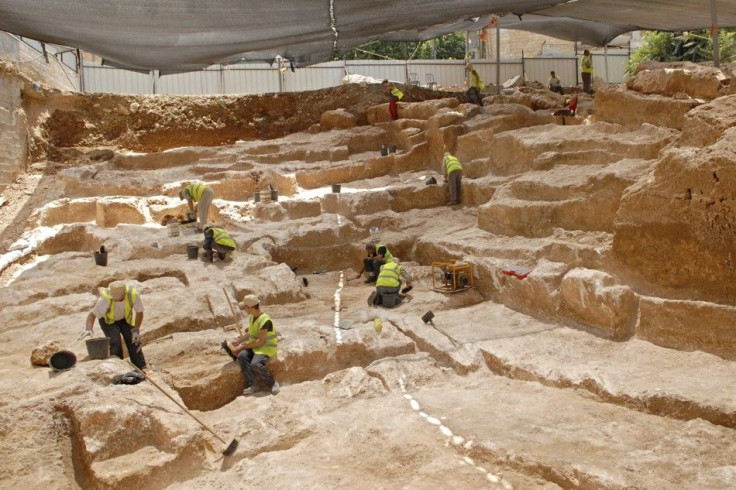Mysterious Jerusalem Carvings Puzzle Israeli Archaeologists

The mysterious V-shaped stone carvings discovered on the bedrock in the oldest section of Jerusalem have mystified Israeli archaeologists, who are unable to arrive at a theory explaining its nature and purpose.
The three V-shaped distinct engravings, carved adjacent to each other, about 5 cms deep and 50 cms long, were found on the limestone floor of a complex of rooms uncovered recently in an excavation underneath the oldest section of Jerusalem.
The archaeologists said the engravings were intriguing and didn't offer any clues as to what purpose they may have served. The markings are very strange, and very intriguing. I've never seen anything like them, Eli Shukron, one of the two directors of the excavation told AP.
According to archaeologists, the carvings could be at least 2,800 years old and might have accommodated wooden structures inside them. The carvings, which may or may not have been used for conducting rituals, have left archaeologists with decades of experience clueless about the nature of the new discovery.
Ceramic shards found in the underground rooms indicate that they were last used around 800 B.C., when Jerusalem was ruled by Judean kings, archaeologists said.
There are reasons to believe that at least one more ancient carving of the same nature exists at the site. A century-old map of an archaeological expedition led by British explorer Montague Parker mentions a V-shaped mark in an underground channel, not far away from the site currently being explored. Modern archaeologists are yet to excavate the region.
The mystery engravings were uncovered in the dig conducted at a major Israeli archaeological site known as the City of David, well-recognized as the biblical Jerusalem. A walled city during the Bronze Age, the City of David, according to tradition, is the place where King David built his palace and established his capital.
The site is currently occupied by Muslims and Jews; however, there has been a proposal to make the City of David --a narrow ridge running south from Temple Mount - into an archaeological park.
© Copyright IBTimes 2024. All rights reserved.












